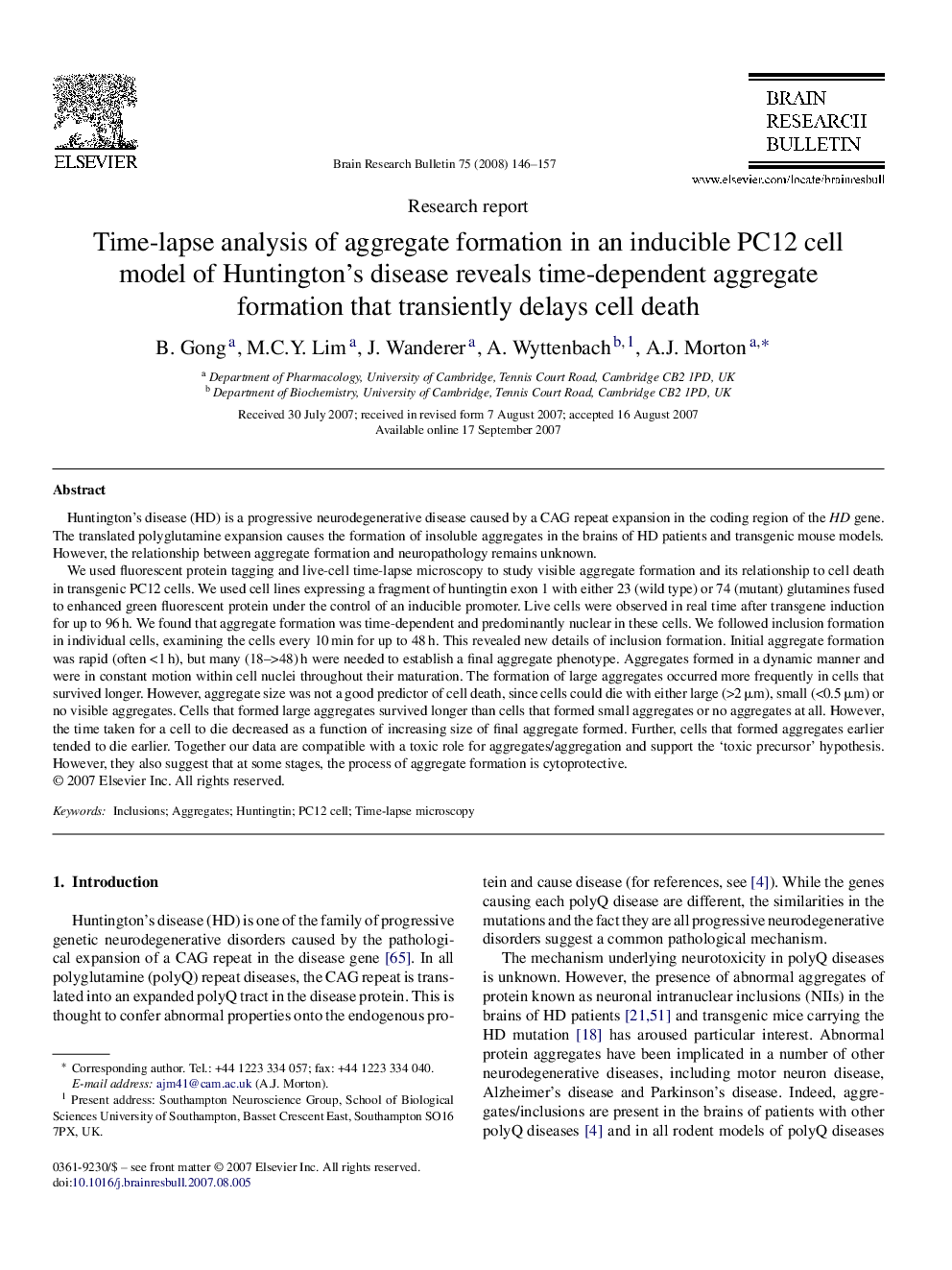| کد مقاله | کد نشریه | سال انتشار | مقاله انگلیسی | نسخه تمام متن |
|---|---|---|---|---|
| 4319871 | 1290835 | 2008 | 12 صفحه PDF | دانلود رایگان |

Huntington's disease (HD) is a progressive neurodegenerative disease caused by a CAG repeat expansion in the coding region of the HD gene. The translated polyglutamine expansion causes the formation of insoluble aggregates in the brains of HD patients and transgenic mouse models. However, the relationship between aggregate formation and neuropathology remains unknown.We used fluorescent protein tagging and live-cell time-lapse microscopy to study visible aggregate formation and its relationship to cell death in transgenic PC12 cells. We used cell lines expressing a fragment of huntingtin exon 1 with either 23 (wild type) or 74 (mutant) glutamines fused to enhanced green fluorescent protein under the control of an inducible promoter. Live cells were observed in real time after transgene induction for up to 96 h. We found that aggregate formation was time-dependent and predominantly nuclear in these cells. We followed inclusion formation in individual cells, examining the cells every 10 min for up to 48 h. This revealed new details of inclusion formation. Initial aggregate formation was rapid (often <1 h), but many (18–>48) h were needed to establish a final aggregate phenotype. Aggregates formed in a dynamic manner and were in constant motion within cell nuclei throughout their maturation. The formation of large aggregates occurred more frequently in cells that survived longer. However, aggregate size was not a good predictor of cell death, since cells could die with either large (>2 μm), small (<0.5 μm) or no visible aggregates. Cells that formed large aggregates survived longer than cells that formed small aggregates or no aggregates at all. However, the time taken for a cell to die decreased as a function of increasing size of final aggregate formed. Further, cells that formed aggregates earlier tended to die earlier. Together our data are compatible with a toxic role for aggregates/aggregation and support the ‘toxic precursor’ hypothesis. However, they also suggest that at some stages, the process of aggregate formation is cytoprotective.
Journal: Brain Research Bulletin - Volume 75, Issue 1, 31 January 2008, Pages 146–157